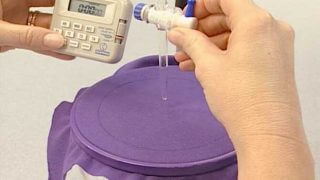Quality Testing: Care & Appearance
Care & Appearance in Quality Testing
Apparel and home products are valued for their ease of care and their appearance before and after laundering. Key characteristics important for appearance are smoothness and resistance to shrinkage. Also important for garments are the absence of wrinkles, maintenance of wanted creases and pleats, and flatness of cuffs, plackets, and collars. Important colorfastness properties include light fastness and resistance to color loss, staining, and rocking.
Appearance
Various methods have been developed to measure changes in the appearance of a textile or garment as a result of cleaning. Appearance may change as a result of the abrasion inherent in laundering and drying, which can cause fuzzing or pilling and changes in color. Consumers value a wrinkle-free appearance, seam smoothness, and retention of creases or pleats.
Colorfastness
Loss of color during home washing or laundering can be related to the dyestuff used, poor rinsing in the dyehouse, or the use of unsuitable laundry products. The consumer cares only that the product has lost color, that the shade has changed, or that other items or other parts of the garment have been stained by unfixed color. “Colorfastness” is defined as the resistance of a material to change in any of its color characteristics and to transfer its colorant to adjacent materials during processing, testing, storage, or use.
Lightfastness
It is important for textile and apparel products to maintain their color after exposure to light. Light-fastness tests are designed to determine how much the color will fade when the sample is exposed to a standard light source. Sunlight is a major cause of color loss. The potential for damage depends on the colorant used, product end-use, geographical area of use, season, light incidence, humidity, and other variables. By nature, the characteristics of light are not constant. As with most test methods, the relationship between any light-fastness test and actual exposure during consumer use must be determined and agreed upon by the manufacturer and customer.
Rating Procedures
Colorfastness, color change, crocking, and other measurements of color are covered under international testing procedures. Most commonly, the specimen color is compared before and after exposure in the test. Ratings typically are on a numbered scale where the better the performance, the higher the number.
Dimensional Stability
One of the most important aspects of performance for apparel or home textiles is dimensional stability to laundering. Excessive dimensional instability affects appearance, fit, size, and serviceability. Possibly the worst aspect of performance, from the consumer’s perspective, is the growth or shrinkage of apparel so that it no longer fits.
Skewness
Skewness or torque is the annoying tendency of some fabrics and garments to twist after laundering. Skewing results in the displacement of side seams, sleeves, legs, and other parts of a garment, resulting in an unsatisfactory appearance.


